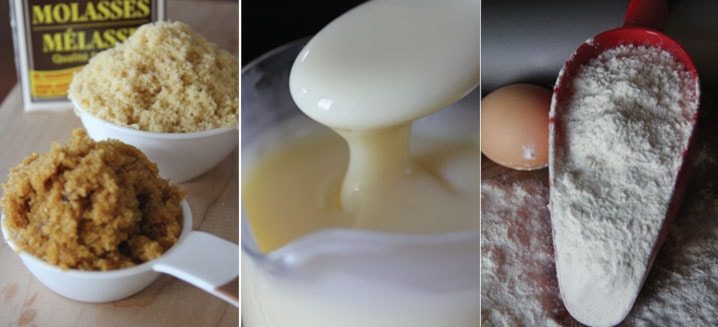One of the Badonis’ Christmas morning family traditions is eating warm cinnamon buns slathered with cream cheese icing.
It doesn’t matter what buns recipe I use but the icing is a necessity.
I form the buns the night before and let them rise. On Christmas morning, as much as the anticipation of what presents are under the tree, the expectation of biting into the warm bun and licking the icing off of the fingers is an added motivation to get everyone out of the bed.
A couple of years ago, as I started to prepare the icing, I discovered there was no icing sugar in my pantry. With the grocery stores being closed Christmas Day, I suggested forgoing the icing. Both my teenagers had the same look as when they discovered there was no Santa Claus, and my husband confidently replied, “I know you can make icing sugar, you can make anything.”
With a family tradition at stake, the pressure was on to figure out how I was going to ice the cinnamon rolls. After a little research, I did perform a Christmas “miracle” and cream cheese icing did top the buns as always.
I had a revelation of sorts — I learned that there are a lot of baking ingredients that can be easily made from scratch and you don’t have to break baking momentum for one missing item. Besides discovering how some staples are made and what you take for granted, I discovered they are also easier on the wallet than buying.
Here are my top five pantry basics that can easily be made at home:
Icing sugar
I have never really analyzed icing sugar, because I have always just purchased the packaged bag. But that Christmas Day, I discovered icing sugar is simply granulated sugar that is ground to a super fine form with cornstarch added to it.
The cornstarch is necessary because it prevents the icing sugar from caking and, more importantly, helps the powdered sugar to stick together and achieve a smooth consistency when mixed with liquid.
To convert granulated sugar to icing, place one cup sugar in the blender; pulse until the sugar turns to very fine powder. Don’t just put the blender on high and leave it for a minute as the heat generated by the blender blades can burn the sugar. Pulsing for a few seconds, then checking the sugar, then pulsing again will prevent the sugar from becoming overheated.
Once your sugar has achieved the right consistency, place one tablespoon of cornstarch into the blender and pulse for a couple of seconds to mix thoroughly.
Don’t be tempted to throw the cornstarch in with the sugar right at the start as it will hinder the sugar powdering process and will also contribute to the generation of unwanted heat.
Brown sugar
Have you ever wondered what makes up brown sugar? Surprisingly it is just two ingredients — granulated sugar and molasses. That is it! One cup of sugar and one tablespoon of molasses, mixed together gives you light fluffy brown sugar.
Most recipes suggest using a hand blender, but this just flings the sugar all over the place. It is easier if you mix with a hand whisk to first mix the molasses and then, using your fingers, rub the sugar.
Adding one tablespoon makes light brown sugar while two tablespoons makes dark, rich sugar. It is as good as store-bought with added advantage of using soft brown sugar every time instead of the hard-rock state that can happen when stored for months.
Molasses has a very long shelf life (could be up to two years), so it can be stable pantry ingredient that is not only used to make gingerbread cookies.
Sweetened condensed milk
Sweetened condensed milk is one of the things that you only buy once a year and for a 300-ml can it costs about $4. That cost adds up but it is an essential baking ingredient during holiday season.
To make a can that most condensed milk come in, mix 1/3 cup boiling water, 4 tablespoons butter, 3/4 cup sugar, 1/2 teaspoon pure vanilla extract in a blender. Add 1 cup of powdered milk and blend until thick. Store in refrigerator for up to one week.
It will get thicker when it is refrigerated, but will loosen up when stirred and brought to room temperature.
This works well in candies, fudge, cookies and squares. The only difference is the cost. With what I paid for the ingredients, my cost was around $1.
Self-rising flour
Who besides me is crazy enough to keep self-rising flour in the pantry? Honestly, there’s no need to since you can make your own at home.
It is quite expensive purchase but there are many sweet treats that ask for this variety of flour. For each cup of flour, add 1 1/2 teaspoons baking powder and a 1/2 teaspoon salt; mix extra and store it in an airtight container for months.
Baking powder
Now baking powder really isn’t cheaper to make at home. This is one of those things you do if you run out or if you discover the container you have is way past the expiry date. Using old baking powder can prevent baking from rising.
In a pinch, if you need one tablespoon of baking powder, mix one teaspoon baking soda with two teaspoons cream of tartar.
To store baking powder: Add one teaspoon of corn starch to the mixture, and stir. This will absorb any moisture from the air, and prevent the baking powder from reacting before you need it. Store in an air-tight container.
Madhu Badoni is a Red Deer-based freelance food writer. She can be reached at madhubadoni@gmail.com or on Twitter @madhubadoni. Watch for Madhu’s Masala-Mix blog on www.reddeeradvocate.com.
